#new deal
Text


The United States is about to embark on an experiment inspired by one of the New Deal’s most popular programs. On Wednesday, the Biden administration authorized the creation of the American Climate Corps through an executive order. The program would hire 20,000 young people in its first year, putting them to work installing wind and solar projects, making homes more energy-efficient, and restoring ecosystems like coastal wetlands to protect towns from flooding. ¹
Rep. Joe Neguse, a Colorado Democrat, said the program should pay “a living wage” while offering health care coverage and other benefits. ²
There are plans to link it with AmeriCorps, the national service program, and leverage several smaller climate corps initiatives that states have launched in California, Colorado, Maine, Michigan, and Washington. The White House also launched a new website where you can sign up to get updates about joining the program. ¹
The American Climate Corps is an interagency partnership between AmeriCorps, National Oceanic and Atmospheric Administration (NOAA) and the Departments of Labor, Interior, Agriculture, and Energy.³
Reviving the Civilian Conservation Corps is widely popular, with 84 percent of Americans supporting the idea in polling conducted by the Yale Program on Climate Change Communication last year. ¹
¹ Grist, Sep. 20ᵗʰ 2023 ² Boston, Sept. 21ˢᵗ. 2023 ³ AmeriCorps, Sept. 20ᵗʰ 2023
#climate change#news#biden#america#usa#global warming#environment#environmetalism#new deal#politics#work#jobs#economy#mine#articles
971 notes
·
View notes
Text
Incomplete vs. overshoot
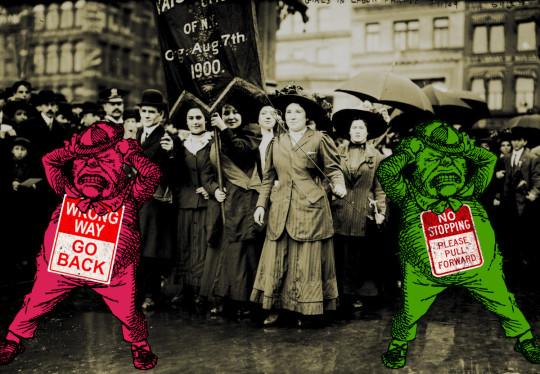
I'm on tour with my new novel The Bezzle! Catch me TONIGHT in Seattle (Feb 26) with Neal Stephenson, then Portland, Phoenix and more!

You know the "horseshoe theory," right? "The far-left and the far-right, rather than being at opposite and opposing ends of a linear continuum of the political spectrum, closely resemble each other, analogous to the way that the opposite ends of a horseshoe are close together":
https://en.wikipedia.org/wiki/Horseshoe_theory
It's a theory that only makes sense if you don't know much about the right and the left and what each side wants out of politics.
Take women's suffrage. The early suffragists ("suffragettes" in the UK) were mostly interested in votes for affluent, white women – not women as a body. Today's left criticizes the suffrage movement on the basis that they didn't go far enough:
https://www.npr.org/2011/03/25/134849480/the-root-how-racism-tainted-womens-suffrage
Contrast that with Christian Dominionists – the cranks who think that embryos are people (though presumably not for the purpose of calculating a state's electoral college vote? Though it would be cool if presidential elections turned on which side of a state line a fertility clinic's chest-freezer rested on):
https://www.wnycstudios.org/podcasts/otm/segments/how-alabama-ivf-ruling-was-influenced-christian-nationalism-on-the-media?tab=summary
These people are part of a far-right coalition that wants to abolish votes for women. As billionaire far-right bagman Peter Thiel wrote that he thought it was a mistake to let women vote at all:
https://www.cato-unbound.org/2009/04/13/peter-thiel/education-libertarian/
Superficially, there's some horseshoe theory action going on here. The left thinks the suffragists were wrong. The right thinks they were wrong, too. Therefore, the left and the right agree!
Well, they agree that the suffragists were wrong, but for opposite reasons – and far, far more importantly, they totally disagree about what they want. The right wants a world where no women can vote. The left wants a world where all women can vote. The idea that the right and the left agree on women's suffrage is, as the physicists say, "not even wrong."
It's the kind of wrong that can only be captured by citing scripture, specifically, A Fish Called Wanda, 6E, 79: "The central message of Buddhism is not 'Every man for himself.' And the London Underground is not a political movement. Those are all mistakes, Otto. I looked them up."
Or take the New Deal. While the New Deal set its sites on liberating workers from precarity, abuse and corruption, the Dealers – like the suffragists – had huge gaps in their program, omitting people of color, indigenous people, women, queer people, etc. There are lots of leftists who criticize the New Deal on this basis: it didn't go far enough:
https://livingnewdeal.org/new-deal-and-race/
But for the past 40 years, America has seen a sustained, vicious assault on New Deal programs, from Social Security to Medicare to food stamps to labor rights to national parks, funded by billionaires who want to bring back the Gilded Age and turn us all into forelock-tugging plebs:
https://pluralistic.net/2022/11/06/the-end-of-the-road-to-serfdom/
If you only view politics as a game of elementary school cliques, you might say that the left and the right are meeting again. The left says Roosevelt got it wrong with the New Deal (because he left out so many people). The right says FDR was wrong for doing the New Deal in the first place. Therefore, the left and the right agree, right?
Obviously wrong. Obviously. Again, the important thing is why the left and the right think the New Deal deserves criticism. The important thing is what the left and the right want. The left wants universal liberation. The right wants us all in economic chains. They do not agree.
It's not always just politics, either. Take the old, good internet. That was an internet defined by technological self-determination, a wild and wooly internet where there were few gatekeepers, where disfavored groups could find each other and make common cause, where users who were threatened by the greed of the shareholders behind big services could install blockers, mods, alternative clients and other "adversarial interoperability" tools that seized the means of computation.
Today's enshitternet – "five giant websites, filled with screenshots of the other four" (h/t Tom Eastman) – is orders of magnitude more populous than that old, good internet. The enshitternet has billions of users, and they are legally – and technologically – prevented from taking any self-help measures when the owners of services change them to shift value from users to themselves:
https://pluralistic.net/2023/02/19/twiddler/
The anti-enshittification movement rightly criticizes the old, good internet because it wasn't inclusive enough. It was a system almost exclusively hospitable to affluent, privileged people – the people who least needed the liberatory power of technology.
Likewise pro-enshittification monopolists – billionaires and their useful idiots – deplore the old, good internet because it gave its users too much power. For them, ad-blocking, alternative clients, mods, reverse-engineering and so on were all bugs, not features. For them, the enshitternet is great because businesses can literally criminalize taking action to protect yourself from their predatory impulses:
https://pluralistic.net/2022/10/20/benevolent-dictators/#felony-contempt-of-business-model
Superficially, it seems like the pro- and anti-enshittification forces agree – they both agree that the old, good internet was a mistake. But the difference that matters here is that the pro-enshittification side wants everyone mired in the enshitternet forever, living with what Jay Freeman calls "Felony contempt of business-model." By contrast, the disenshittification side wants a new, good internet that gives every user – not just a handful of techies – the power to decide how the digital systems they work use, and to be able to alter or reconfigure them to suit their own needs.
The horsehoe theory only makes sense if you don't take into account the beliefs and goals of each side. Politics aren't just a matter of who you agree with on a given issue – the real issue is what you're trying to accomplish.

If you'd like an essay-formatted version of this post to read or share, here's a link to it on pluralistic.net, my surveillance-free, ad-free, tracker-free blog:
https://pluralistic.net/2024/02/26/horsehoe-crab/#substantive-disagreement
#pluralistic#politics#suffrage#womens rights#new deal#civil rights#race#enshitternet#new good internet#old good internet
122 notes
·
View notes
Link
A common belief about both the I.R.A. and 2021’s Infrastructure Investment and Jobs Act, President Biden’s other key legislation for infrastructure investment, is that they represent a renewal of President Franklin Roosevelt’s New Deal infrastructure programs of the 1930s. This is wrong. The signature feature of the New Deal was public ownership: Even as private firms carried out many of the tens of thousands of construction projects, almost all of the new infrastructure was funded and owned publicly. These were public works. Public ownership of major infrastructure has been an American mainstay ever since.
Mr. Biden’s laws will radically overhaul this culture. Informed by what Brian Alexander, a writer for The Atlantic, in 2017 described as a profound recent change in philosophy among U.S. policymakers about “how to build and maintain America’s stuff,” the modus operandi of both statutes is principally to subsidize and catalyze private-sector infrastructure investment [...].
So it would be truer to say that in political-economic terms, Mr. Biden, far from assuming Roosevelt’s mantle, has actually been dismantling the Rooseveltian legacy. The upshot will be a wholesale transformation of the national landscape of infrastructure ownership and associated service delivery.
[...]
The story of asset-manager-led infrastructure investment is overwhelmingly a negative one. Asset managers are focused on optimizing returns on the assets they control by maximizing the income they generate while minimizing operating and capital costs. Many users of infrastructure that has come under asset manager ownership have suffered, as service rates have risen quickly and service quality has deteriorated.
Nowhere is this better illustrated than in Britain. There, numerous types of infrastructure have come substantially under asset manager ownership. This has led to consistently negative outcomes in, for example, care facilities, schools and water supply. Many observers have concluded that essential infrastructure and asset manager ownership simply don’t mix.
274 notes
·
View notes
Text

Furniture Repair at Fair Street School
Record Group 69: Records of the Work Projects AdministrationSeries: National Youth Administration (NYA) Photographs showing Projects in New England and New York
Original caption: This photograph depicts a young man repairing a chaise lounge for a National Youth Administration training program at the Fair Street School in Connecticut.
This black and white photograph shows a young man recaning a chaise lounge. His face is not visible as he bends over the lounge. A nearby chair holds the cane that he’s working with. Tables and many chairs line the edges of the room.
43 notes
·
View notes
Text

This is a fresco mural entitled "The New Deal," by Conrad Albrizio, depicting various phases of that program. It was unveiled in the auditorium of the Leonardo Da Vinci Art School on January 24, 1935. President Franklin D. Roosevelt, architect of the New Deal, is standing in the center.
Photo: Associated Press
#vintage New York#1930s#Conrad Albrizio#mural#Federal Art Project#New Deal#FDR#Jan. 24#24 Jan.#fresco#Great Depression#Federal Art Project mural
60 notes
·
View notes
Text

The Social Security Act, signed on this day in 1935, provided retirement and unemployment benefits to Americans, but it didn’t include farm and domestic workers, who were disproportionately Black. This kept nearly two-thirds of Black workers out of the program.
Learn more in our current special exhibition: BLACK AMERICANS, CIVIL RIGHTS, AND THE ROOSEVELTS: https://fdrlibrary.org/civil-rights-special-exhibit
Photo: Domestic workers march to demand inclusion in the Social Security program and New Deal legislation establishing a national minimum wage. (c) Joe Schwartz Photo Archive
129 notes
·
View notes
Text
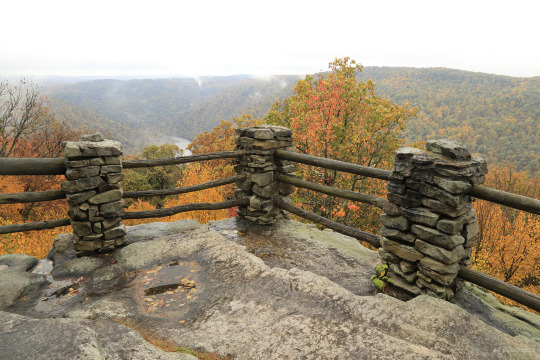
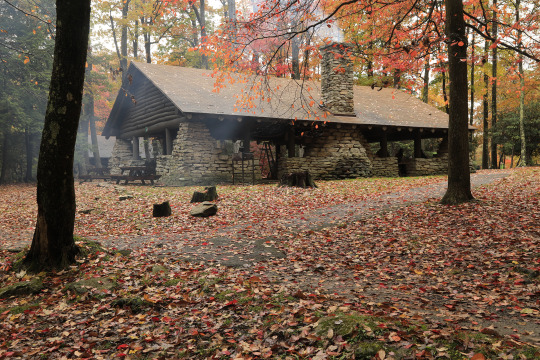







The Civilian Conservation Corps (CCC) was established as part of the New Deal in 1933 to help lift the United States out of the Great Depression. Single men between the ages of 18 and 25 were eligible to join the Corps, which undertook a variety of programs to improve the nation's parks and forests, many of which were newly formed. Coopers Rock State Forest was one of the earliest benefactors of the program, with many of the Corps' signature log and stone structures still standing nearly a century later.
#appalachia#vandalia#west virginia#civilian conservation corps#new deal#coopers rock state forest#franklin delano roosevelt
96 notes
·
View notes
Text
"That's the kind of man I could have been if I hadn't had a Harvard education."
-- President Franklin D. Roosevelt, on Lyndon B. Johnson, then a young Congressman whose energy, ambition, and drive impressed FDR.
#History#Presidents#Presidential Quotes#Franklin D. Roosevelt#FDR#President Roosevelt#New Deal#Lyndon B. Johnson#LBJ#President Johnson#Presidential Relationships#Presidential Personalities#Quotes#Quotes by Presidents#Presidency#Harvard#Presidential History
25 notes
·
View notes
Text
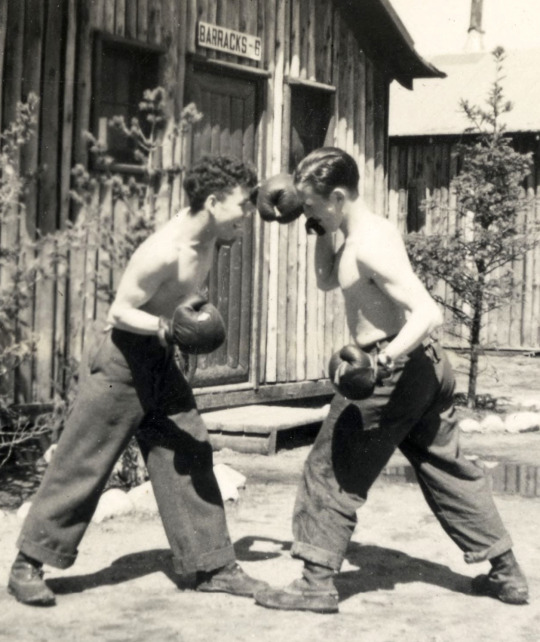
Thorvald Stoen and Harold Juelich in boxing pose, Civilian Conservation Corps, Owen Lake Camp, Chisolm, Minnesota. Minnesota Digital Library.
59 notes
·
View notes
Text
At the end of this article, a homeowner is quoted as saying that there is "no good solution" to the problem of homelessness. He is speaking in the context of a false choice - let homeless people camp in urban areas or force them to move.
There is a solution to homelessness - affordable housing. And it would be cheaper to build or convert existing structures for that purpose than it is to continue to persecute the most vulnerable people in America.
Affordable housing would make it possible for people who are experiencing homelessness to focus on solving the problems that caused them to become homeless. They would be able to get jobs - many homeless people have jobs, but homelessness makes it much harder.
There are agencies in every city that would help people access mental health services and/or address other factors that make it harder for them to succeed, such as substance abuse. Housing would make it easier for people to take advantage of those services.
There will always be people who can't become self-sufficient. Many of those people can contribute to their communities, if they are given some help.
The relative few who simply can't or won't contribute are still human beings and worthy of housing. If they had a place to go, they would cause fewer problems for others. And again, it would be cheaper in the long run to house them.
This would take funding, of course. In the 1950s, when America's economy was the best it has ever been, the top tax rate was 90%. We wouldn't have to raise taxes on billionaires nearly that much to pay for nation-wide affrodable housing. Of course, government jobs, as under the New Deal, would make it possible for many people to work for the betterment of their communities and themselves.
Build back better than it ever was. Vote blue.
#build back better#new deal#vote blue#green new deal#vote democrat#vote biden#vote blue to save democracy#end citizens united#democracy#social democracy#tax the rich#vote blue 2024#tax the 1%#tax the wealthy#tax the billionaires#billionaires should not exist#democratic socialism#democrats now socialism later#homelessness#housing is a human right#vote biden/harris#biden/harris 2024
25 notes
·
View notes
Text

Good Morning! Let's Make A Deal!!!
#franklin delano roosevelt#roosevelt#fdr#new deal#the new deal#there's nothing to fear#fear#good#morning#good morning#good morning message#good morning image#good morning images#good morning man#the good morning man#the entire morning#gif#good morning messages#gm#morning vibes#morning motivation#friday#happy friday#friday vibes#flashing#tw flashing
37 notes
·
View notes
Text
FDR FTW
83 notes
·
View notes
Text

CCC; "Ephraim Counser at Mt. Morris Camp"; N.Y
Collection FDR-PHOCO: Franklin D. Roosevelt Library Public Domain PhotographsSeries: Franklin D. Roosevelt Library Public Domain Photographs
A black and white photograph of an older man in the uniform of the Civilian Conservation Corps, a jacket over a shirt and tie and a side cap. He is looking directly at the camera and holds an ax or hatchet over his shoulder.
#archivesgov#November 16#1933#1930s#great depression#new deal#civilian conservation corps#Mt. Morris#upstate ny#upstate new york
50 notes
·
View notes
Text

A life class for adults at the Brooklyn Museum, under the auspices of the NYC WPA Art Project, ca. 1935.
Photo: Smithsonian Institution
#vintage New York#1930s#WPA Art Project#Work Progress Administration#art class#drawing#vintage Brooklyn#Brooklyn Museum#life drawing#New Deal#vintage NYC
70 notes
·
View notes
Note
did african americans ever gain the benefits of the new deal or were they deliberately excluded by fdr or his administration?
The short version is "yes, but."

If you read the work of Ira Katznelson, Martha Biondi, Tom Sugrue, and others, the picture of the New Deal as it related to African-Americans is not one of comprehensive exclusion, but rather partial access on a discriminatory basis, depending on where you lived and where you worked.
The Faustian bargain that FDR made with the Dixiecrats was based on an either/or proposition that Dixiecrat legislators would vote for New Deal programs, but on the condition that they would either be jointly operated by state/local and the Federal government, or they would have occupational exclusions (chiefly agricultural and domestic workers). The objective was that either all-white Southern governments would be able to racially discriminate (as long as they could come up with a facially-neutral justification) or that the New Deal's national programs would exclude a supermajority of black people in the South, where sharecropping was the dominant occupation for black men and domestic service was the dominant occupation for black women, respectively. (IIRC, it was about 70% for both men and women.)
However, the intent wasn't to completely cut off black people from the New Deal - Southern governments desperately wanted Federal money to boost incomes and thus consumer spending without undermining their low-wage, low tax, low benefits political economy - but rather to ensure that black people's access to public benefits was under white control. So, for example, Southern governments did not want black workers to get access to Unemployment Insurance or Old Age Insurance, because those were entitlement programs where national eligibility and benefit standards would give people a due process right to social insurance. Instead, they wanted to funnel black workers into Aid to Dependent Children or Old Age Assistance (what we think of as "welfare"), where they could use the threat of arbitrary denial to keep black people compliant and achieve other policy objectives.
In addition to cutting people off benefits as punishment for violating the color line by trying to register to vote or hiring a lawyer or trying to buy land etc., Southern governments would routinely engage in a seasonal practice whereby ADC and OAA recipients would be kicked off the rolls when the cotton-planting and cotton-picking season came around in order to ensure a large and desperate workforce, and then re-added to the rolls to provide them with income during the winter months so that farmers didn't have to pay them a living wage.

You'll note that everything I've talked about above had to do with black people living in the South. The story was very different in the North, where black people could vote and largely worked in manufacturing and other occupations that were not excluded from New Deal programs (although black women did face a double burden, in that many of them still worked in domestic service). As a result, black workers were able to benefit from Unemployment Insurance, Old Age Insurance, the Fair Labor Standards Act, the Wagner Act, et al. and dealt with governments that were less interested in systematically discriminating against them. Not uninterested - there's a long history of Welfare Departments using dehumanizing regulations to exert social control on black people - but it tended to be a subtler and more patchwork form of discrimination than under Jim Crow.
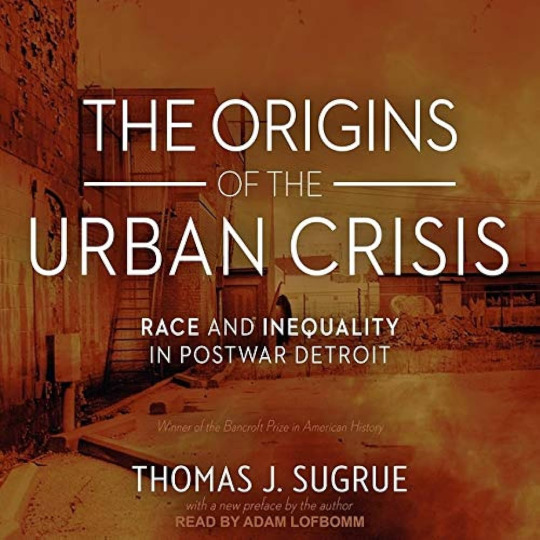
The one major exception to this was in the area of housing. One of the peculiar manifestations of American racism is that the South was largely uninterested in residential segregation and focused instead on political, economic, and social control, and that the North was the reverse. Whether it was through the red-lining of the Federal Housing Administration and HOLC or straightforward racial segregation in public housing constructed by the Federal Housing Authority, Northern governments and communities went to great (and oftentimes violent) lengths to ensure that white neighborhoods and black neighborhoods were kept separate.
But here again, the pattern was one of partial access on a discriminatory basis. Black residents of Northern cities could get apartments in public housing, but only in buildings designated as black-only that were located in poor black neighorhoods. Some black residents might be able to get a mortgage from a black-owned bank to buy a house in a segregated neighborhood, but because they were cut off from the FHA and thus from the GI Bill, most black workers couldn't afford the option of overpaying for lower quality houses and the ones who could generally did not generate much long-term equity because their property was considered less valuable.
So there you have it.
#new deal#history#u.s history#policy history#social policy#economic policy#historiography#historical analysis#history of race
43 notes
·
View notes
Text

Siuslaw River Bridge View - March 2008
Siuslaw River Bridge Wikipedia
#lanecounty#lane county#Siuslaw River#oregon#the great pnw#pnw#oregonexplored#photographers on tumblr#realoregon#exploreoregon#original photographers#the coast#florence oregon#oregon coast#new deal
179 notes
·
View notes